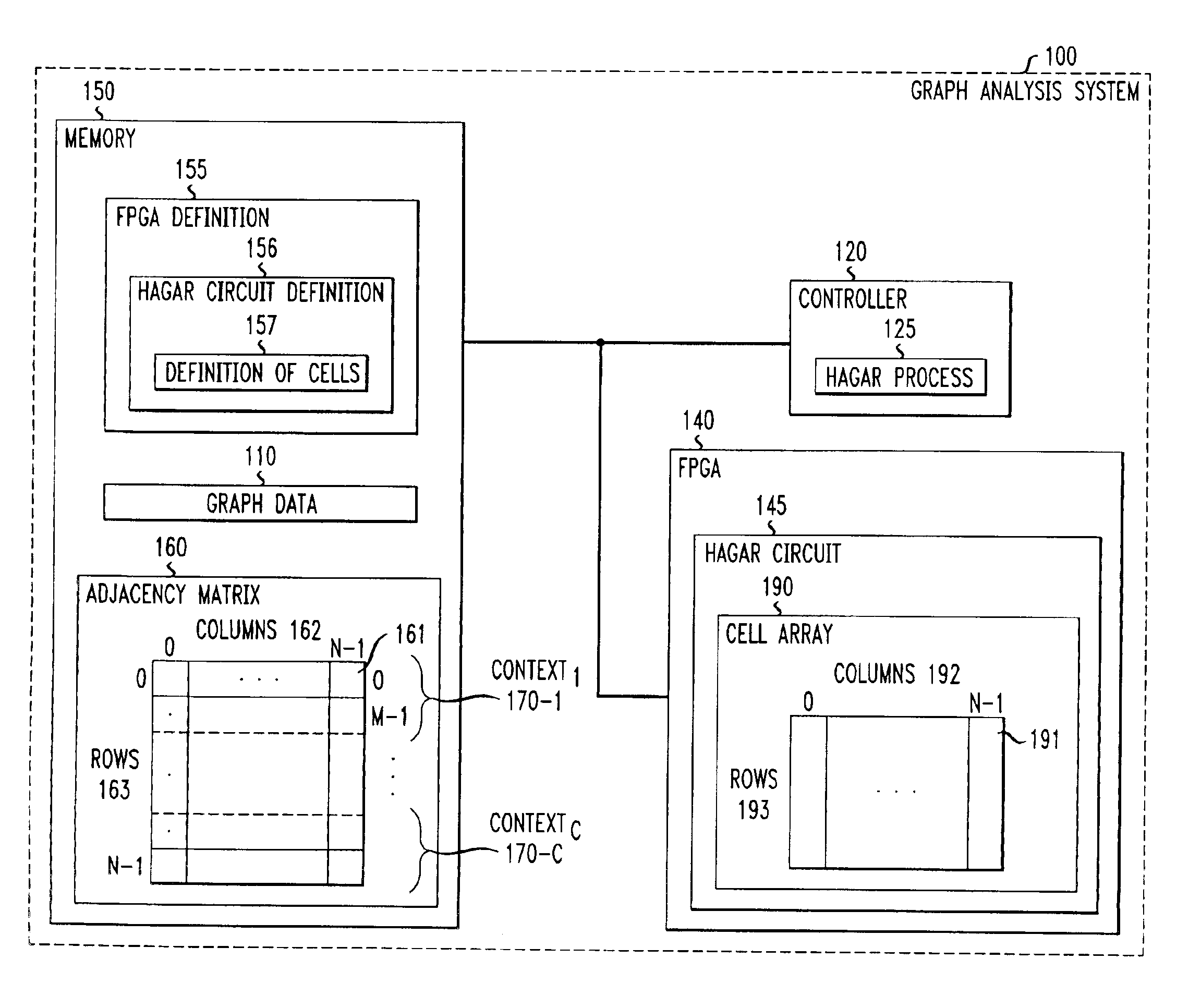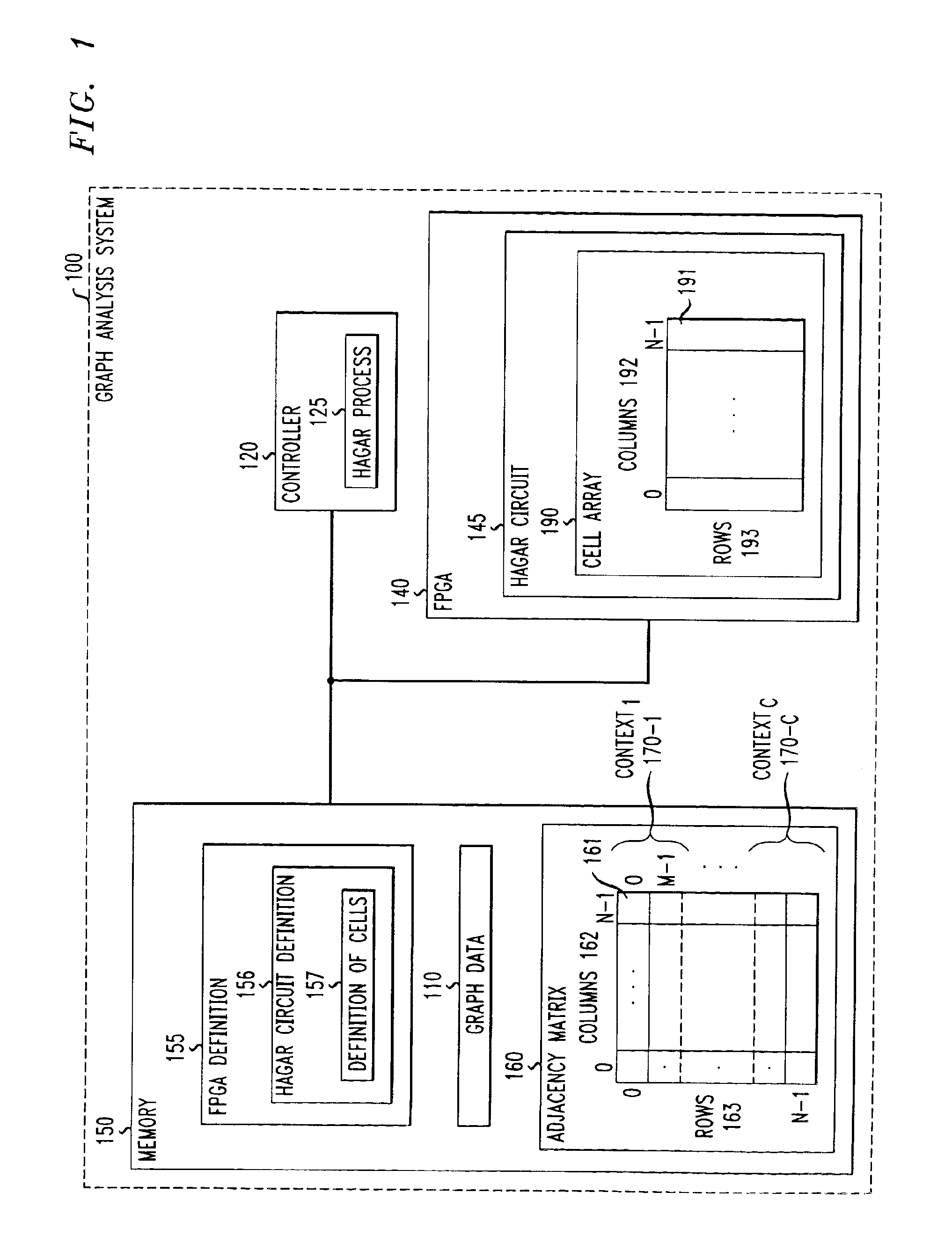Apparatus and methods for analyzing graphs
a graph and graph technology, applied in the field of graphs, can solve the problems of memory latency, memory latency, and major bottlenecks that will become increasingly severe, and achieve the effects of improving the performance of such software implementations, and improving the accuracy of graphs
- Summary
- Abstract
- Description
- Claims
- Application Information
AI Technical Summary
Benefits of technology
Problems solved by technology
Method used
Image
Examples
Embodiment Construction
[0020]This disclosure describes, among other things, (1) a streamlined implementation of a graph representation that is performed through, for instance, tri-state logic and that can increase density and therefore graph size able to fit into an FPGA, (2) a scheme for scaling hardware arrays to larger graphs by splitting adjacency matrices into multiple contexts and having the hardware arrays able to switch between some or all of the multiple contexts, and (3) an embedding of graph analysis circuits in a module generation environment such as an FPGA generation environment.
[0021]Turning now to FIG. 1, an exemplary graph analysis system 100 is shown, in accordance with a preferred embodiment of the invention. Graph analysis system 100 comprises a memory 150, a controller 120, and an FPGA 140. Memory 150 comprises an FPGA definition 155, graph data 110, and an adjacency matrix 160. FPGA definition 155 comprises HAGAR circuit definition 156 and a definition of cells 157. Adjacency matrix ...
PUM
 Login to View More
Login to View More Abstract
Description
Claims
Application Information
 Login to View More
Login to View More - R&D
- Intellectual Property
- Life Sciences
- Materials
- Tech Scout
- Unparalleled Data Quality
- Higher Quality Content
- 60% Fewer Hallucinations
Browse by: Latest US Patents, China's latest patents, Technical Efficacy Thesaurus, Application Domain, Technology Topic, Popular Technical Reports.
© 2025 PatSnap. All rights reserved.Legal|Privacy policy|Modern Slavery Act Transparency Statement|Sitemap|About US| Contact US: help@patsnap.com



